
views
Preparing for Flights

Dress comfortably. You’ll need to be able to stay warm if you survive a crash. Even if that is not a consideration, the more of your body is covered during impact, the less likely you are to receive serious injuries or burns. Wear long pants, a long-sleeve t-shirt, and sturdy, comfortable, lace-up shoes. Loose or elaborate clothing poses a risk, as it can get snagged on obstacles in the close confines of a plane. If you know you’re going to be flying over cold areas, dress appropriately, and consider keeping a jacket on your lap. Cotton or wool clothing is also preferable as it is less flammable. Wool is preferable to cotton when flying over water, as wool does not lose its insulating properties to the degree cotton does when wet.
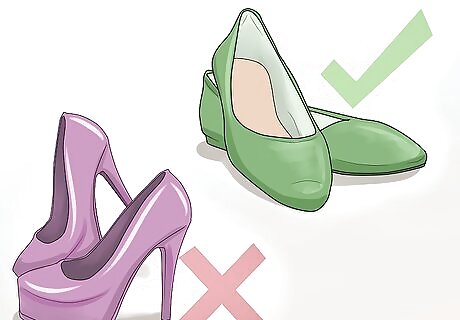
Wear sensible shoes. Although you may want to be comfortable or professional-looking on a flight, sandals or high heels make it hard to move quickly should there be an emergency. High heels are not allowed on the evacuation slides because they could tear them, and you can cut your feet and toes on glass or get flammable liquids on or in your sandals if you wear them.
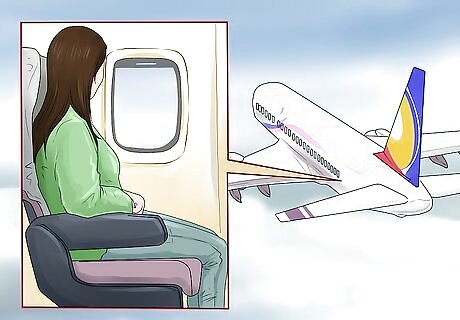
Sit in the tail of the aircraft. Passengers in the tail of the aircraft have 40% higher survival rates than those in the first few rows, in the event of a crash. Because a quick escape gives you the best chance for survival, it’s best to get seats as close as possible to an exit, on the aisle, and in the back of the plane. Yes, it's actually statistically safer to fly economy than first-class. Saving money could also save your life.

Read the safety card and listen to the pre-flight safety speech. Yes, you may have heard it all before, and you’ll hopefully never need it, but if you keep your headphones on during the pre-flight instructions or ignore the safety card, you’ll be missing out on information that could be vital in the event of a crash. Don’t assume you know it all already, either. Every type of airplane has different safety instructions. If you're sitting in an exit row, study the door and make sure you know how to open it if you need to. In normal circumstances the flight attendant will open the door, but if they are dead or injured, you'll need to do it.
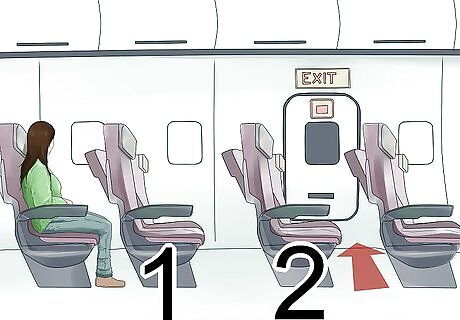
Count the number of seats between your seat and the exit row. Find the exit closest to you, and count the number of seats that it'll take to get to it. If the plane crashes, it could be smoky, loud, or confusing in the cabin afterward. If you need to escape, you might have to feel your way to the exit, which will be a lot easier if you know where it is and how far. It can help to write down the number in pen on your hand, so you'll have a quick reference if you need to.

Keep your seat belt on at all times. Every centimeter of slack in your seat belt triples the G-Force you'll experience in the event of a crash, so keep your seat belt properly tightened at all times you're on the aircraft. Push the belt down as low over your pelvis as possible. You should be able to feel the upper ridge of the pelvis above the upper edge of the belt, which helps to brace you in an emergency much better than your soft stomach. Leave your seat belt on, even if you're sleeping. If something happens while you're out, you'll thank yourself for putting the restraints in place.
Bracing on Impact
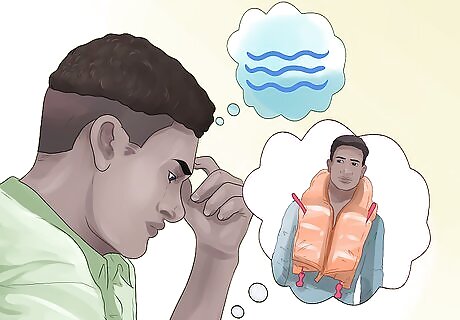
Assess the situation. Try to determine what surface the plane will land on so you can customize your preparations. If you’re going to be landing in water, for example, you’ll want to put your life vest on, though you need to wait to inflate it until you’re out of the plane. If you’re going to be landing in cold weather, you should try to get a blanket or jacket to keep you warm once outside. Plot out the general course you'll be on ahead of time, so you'll have some idea of where you are when the plane crashes. If you're flying from Iowa to California, you can be fairly certain you won't be landing in the ocean. Use the time before the crash to find your exit. If the plane is going to crash, you almost always have several minutes to prepare before impact. Use this time to once again review where the exits are.
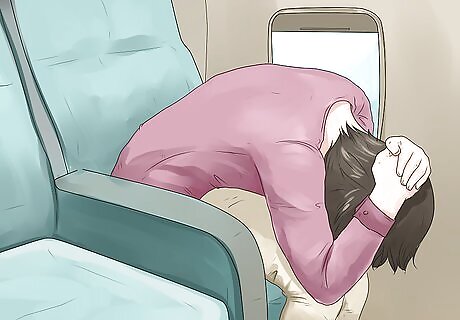
Prepare your space as much as possible. If you know you’re going to crash, return your seat back to its full upright position and stow away any loose items that could become hazardous, if at all possible. Zip up your jacket and make sure your shoes are tied tightly to your feet. Then assume one of two standard brace positions used for surviving a plane crash and try to remain calm. In either position, your feet should be flat on the floor and further back than your knees to reduce injuries to your feet and legs, which you will need in order to successfully exit the craft after impact. Place your legs as far under the seat as possible to avoid breaking your shin bones.

Brace yourself against the seat in front of you. If the seat in front of you is close enough to reach, place one hand palm-down on the back of that seat, then cross the other hand palm-down over the first hand. Rest your forehead against your hands. Keep your fingers unlaced. It's also sometimes recommended that you put your head directly against the seat in front of you and lace your fingers behind your head, tucking your upper arms against the sides of your head to cradle it. Bend forward, if there's no seat in front of you. If you don’t have a seat close in front of you, bend forward and put your chest on your thighs and your head between your knees. Cross your wrists in front of your lower calves, and grab your ankles.

Try to remain calm. It can be easy to get swept up in the pandemonium immediately preceding and following a crash. Keep a cool head, though, and you’re more likely to get out alive. Remember that even in the worst wrecks, you do have a chance of survival. You’ll need to be able to think methodically and rationally to maximize that chance.
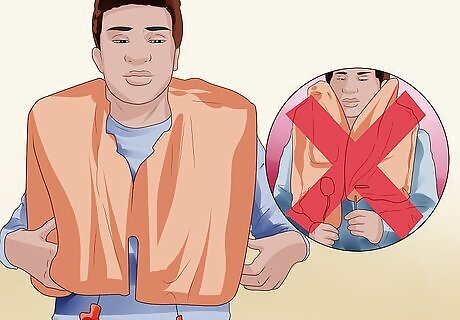
Put on your life jacket but do not inflate it, in the case of a crash in water. If you inflate it in the plane, when it starts to fill up with water, the life jacket will force you upwards against the cabin roof and it will be very hard to swim back down, leaving you trapped. Inflating it before leaving the plane also runs the risk of it being torn while you evacuate, rendering it useless when you really need it. Instead, hold your breath and swim out, and once you're out, inflate it.

Put your oxygen mask on before assisting others. You’ve probably heard this on every commercial flight you’ve been on, but it’s worth repeating. If the integrity of the cabin is compromised, you have only about 15 seconds or less to start breathing through your oxygen mask before you are rendered unconscious. While you may feel an impulse to first help your children or the elderly passenger sitting next to you, you’ll be no good to anyone if you don’t remain conscious. Also, remember that you can put somebody else's oxygen mask on even if they're unconscious. This might help save their life.
Surviving the Crash
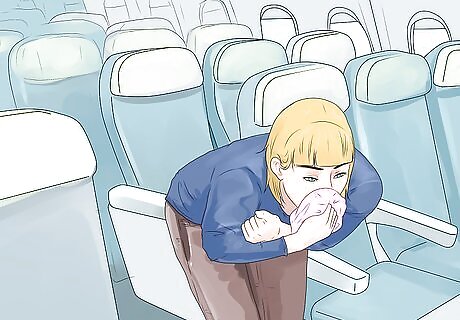
Protect yourself from smoke. Fire and smoke are responsible for the largest percentage of plane crash fatalities. The smoke in an airplane fire can be very thick and highly toxic, so cover your nose and mouth with a cloth to avoid breathing it in. If possible, moisten the cloth to provide extra protection. Stay low as you escape, to duck under the level of smoke. It might not seem like a big deal, but passing out due to smoke inhalation is one of the most dangerous things that can happen during this critical period.
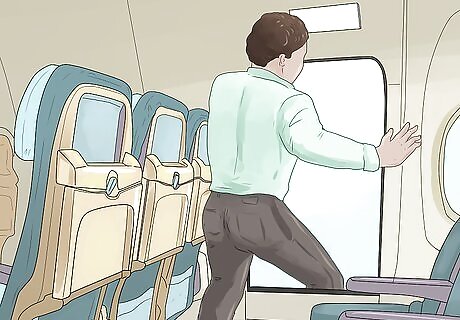
Get out of the airplane as quickly as possible. According to the National Transportation Safety Board (NTSB), 68 percent of plane crash deaths are due to post-crash fire, not injuries sustained in the crash itself. It’s critical to get out of the aircraft without delay. If fire or smoke is present, you will generally have less than two minutes to safely exit the plane. Make sure the exit you choose is safe. Look through the window to determine if there is fire or some other hazard outside of an exit. If there is, try the exit across the plane, or proceed to another set of exits.
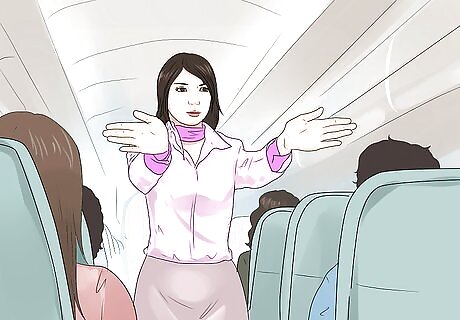
Listen to the flight attendants’ post-crash instructions. Flight attendants undergo rigorous training to make sure they know what to do in the event of a crash. If a flight attendant is able to instruct or assist you, listen closely and cooperate to increase everyone’s chances of survival.

Ditch your stuff. Don’t try to rescue your belongings. It’s common sense, but still some people don’t seem to get it. Leave everything behind. Rescuing your belongings will only slow you and other people down. If you end up needing to salvage supplies from the plane crash site, worry about that later. Right now, you need to make sure that you get clear of the wreckage and find some safe cover. Get out now.
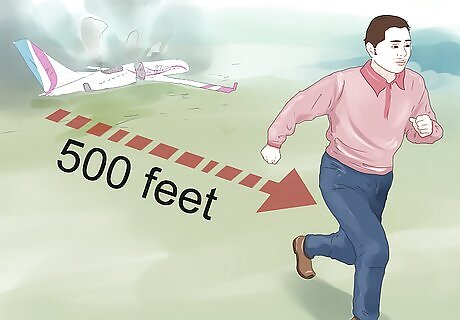
Get at least 500 feet (152.4 m) upwind from the wreckage. If you’re stranded in a remote area, the best thing to do usually is to stay close to the aircraft to await rescuers. You don’t want to be too close, though. Fire or explosion can happen at any time after a crash, so put some distance between you and the plane. If the crash is in open-water, swim as far away from the plane wreckage as possible.
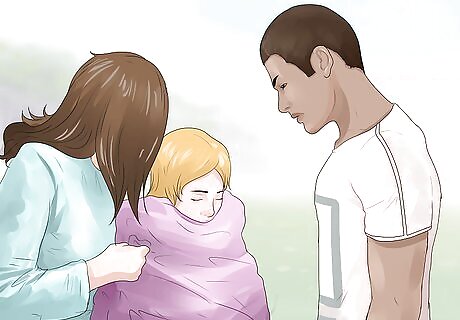
Stay in one place, but pay attention to what needs to happen. While it’s essential to stay calm after a crash, you also need to recognize when you need to act and do so swiftly. Help out people who are struggling and tend to people's wounds using basic first aid available. Attend to your own wounds if at all possible. Check yourself for cuts and other abrasions, and apply pressure if necessary. Stay in one place to reduce the chance of exacerbating internal injuries. Negative panic is a strange inability to react assertively and appropriately to the situation. For example, a person may just remain in their seat instead of heading toward the exit. Watch out for this in your fellow passengers or traveling companions.
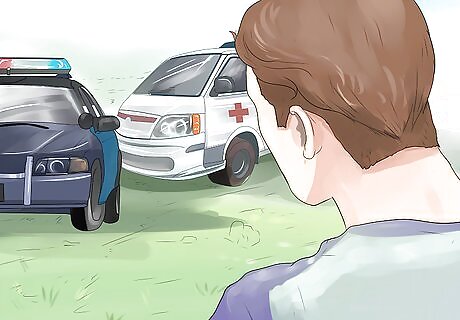
Call emergency services and wait for rescue. You stand a much higher chance of surviving if you just stay put. Don't wander off and look for help, or try to find something close by. If your plane went down, there will be people on the way quickly, and you want to be there when they arrive. Just stay put.


















Comments
0 comment